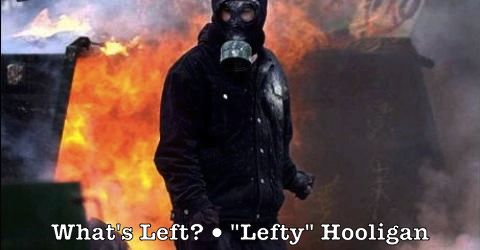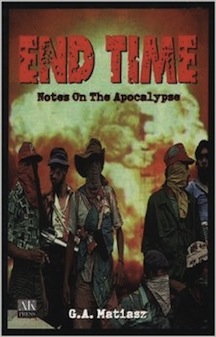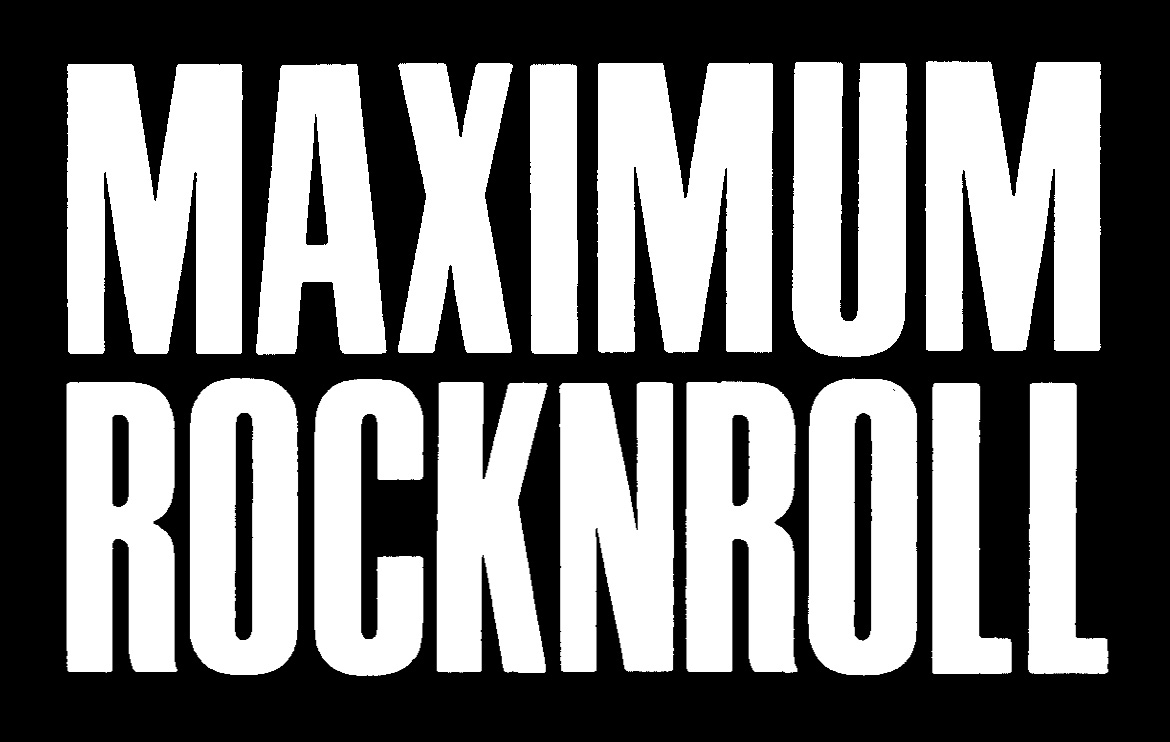 The Sixties, henceforth designated the Long Sixties, are a touchstone for me. I make a lot of “coming late to the party” as I became aware of politics only in 1968 at age 16. And so I return to this period of my life obsessively in my writing. This piece treats the historical period as crucially intertwined with the history of the United States. To understand what I’m hoping to accomplish, consider that from one perspective the Vietnam War (1946-1975) was a war for national liberation—part of the decolonization wave of Africa, Asia and Latin America—that saw the defeat of first France and then the United States, and inspired similar armed struggles around the globe. But from another perspective America’s initial involvement in the Vietnam War—when the US first shipped military aid to the French colonial administration in 1950 and Eisenhower first sent military advisors to train the South Vietnamese Army in 1955—was crucial to the historical impact of the Long Sixties through the numerous movements I detail below. Because so much happened in these two decades, I’m necessarily selective about what I’m including in this synopsis. Instead of my regular column, I’m fashioning this as a type of “CliffsNotes,” a shorthand attempt to summarize the Long Sixties every time I drop the term. Expect this to be periodically updated in future installments as I expound and expand on it.
The Sixties, henceforth designated the Long Sixties, are a touchstone for me. I make a lot of “coming late to the party” as I became aware of politics only in 1968 at age 16. And so I return to this period of my life obsessively in my writing. This piece treats the historical period as crucially intertwined with the history of the United States. To understand what I’m hoping to accomplish, consider that from one perspective the Vietnam War (1946-1975) was a war for national liberation—part of the decolonization wave of Africa, Asia and Latin America—that saw the defeat of first France and then the United States, and inspired similar armed struggles around the globe. But from another perspective America’s initial involvement in the Vietnam War—when the US first shipped military aid to the French colonial administration in 1950 and Eisenhower first sent military advisors to train the South Vietnamese Army in 1955—was crucial to the historical impact of the Long Sixties through the numerous movements I detail below. Because so much happened in these two decades, I’m necessarily selective about what I’m including in this synopsis. Instead of my regular column, I’m fashioning this as a type of “CliffsNotes,” a shorthand attempt to summarize the Long Sixties every time I drop the term. Expect this to be periodically updated in future installments as I expound and expand on it.
THE LONG SIXTIES: 1955-1975:
Contours Of U.S. History:
Colonial origins, continental expansion (Manifest Destiny) with displacement of the native population, and hemispheric hegemony (Monroe Doctrine). Capitalist individualism and entrepreneurialism alongside Black plantation slavery, Civil War, failed Reconstruction, codification of Jim Crow racial segregation reinforced by white supremacist terrorism. Beginnings of empire and imperialist interventionism, robber baron capitalism mythologizing laissez-faire while creating monopoly, US entry onto international stage with first World War. Assumption of two-camp capitalist/socialist global division around 1917 Russian Revolution, economic crisis in world capitalism, Great Depression, beginning of US welfare state with FDR/New Deal. Second World War between fascist Axis powers and US/USSR allies of convenience, US supersedes British imperial reach. Post-war consolidation of American corporate state and Pax Americana.
• American Way Of Life: American Liberalism’s welfare state, as constructed by Franklin D. Roosevelt (New Deal), Harry Truman (Square Deal), John F. Kennedy (New Frontier), and Lyndon Johnson (Great Society), integrated with the team cooperation, bureaucratic management, and multinational scope of Monopoly Capitalism. The individual subsumed to the organization. This required worker-management cooperation to guarantee labor peace through a liberal corporatist consensus. The American Way of Life defined a time of suburbanization, consumerism, material surplus and affluence; “the world’s highest standard of living.”
• The Cold War: The post-second World War division of the world into two contending power blocs, the US-dominated “Free World” and the USSR-dominated “Communist bloc.” Instead of direct military conflicts between the two superpowers, proxy or brush wars were fought indirectly between their spheres of influence, often in nations on the periphery (Korea, Vietnam). Anti-imperialist wars of national liberation often relied on asymmetrical guerrilla warfare to achieve decolonization, national self-determination and putative socialism. The rise of China (PRC) and the Third World further fractured and complicated the Cold War internationally. A bipartisan Cold War consensus about the means and ends of American foreign policy against the Soviet threat was considered to have prevailed domestically
 • Rock Music/Youth Culture: The cross-pollination of rhythm-and-blues and gospel music from American Black culture with country/western music to create rock-and-roll, a cross fertilization of ethnic and regional styles that included the trend toward inter-racial bands. Rock Music/Youth Culture emphasized the importance of youth trends, tastes, and consumption and spread almost immediately to Britain, then to Western Europe, and finally to the rest of the world. A number of distinct rock-and-roll sub genres emerged by the late 1960s (blues rock, folk rock, country rock, psychedelic rock, jazz/rock fusion, progressive rock, heavy metal, etc). Dovetailing with the Beat Generation’s nihilism, youthful rebellion became social discontent that, when combined with quasi-sacramental drug use and liberated sexuality, formed the “turn on, tune in, drop out” freethinking communalist Hippie Counterculture/Youth Movement. Large, multi-day music festivals and intentional communities were hallmarks of the movement. The collective organizing, urban cooperatives and back-to-the-land rural communes of the San Francisco Diggers, Merry Pranksters, Good Earth, Hog Farm, White Panther Party, UATW-MF, etc. attempted to establish a practical alternative society on the ground and had decidedly anarchistic sensibilities.
• Rock Music/Youth Culture: The cross-pollination of rhythm-and-blues and gospel music from American Black culture with country/western music to create rock-and-roll, a cross fertilization of ethnic and regional styles that included the trend toward inter-racial bands. Rock Music/Youth Culture emphasized the importance of youth trends, tastes, and consumption and spread almost immediately to Britain, then to Western Europe, and finally to the rest of the world. A number of distinct rock-and-roll sub genres emerged by the late 1960s (blues rock, folk rock, country rock, psychedelic rock, jazz/rock fusion, progressive rock, heavy metal, etc). Dovetailing with the Beat Generation’s nihilism, youthful rebellion became social discontent that, when combined with quasi-sacramental drug use and liberated sexuality, formed the “turn on, tune in, drop out” freethinking communalist Hippie Counterculture/Youth Movement. Large, multi-day music festivals and intentional communities were hallmarks of the movement. The collective organizing, urban cooperatives and back-to-the-land rural communes of the San Francisco Diggers, Merry Pranksters, Good Earth, Hog Farm, White Panther Party, UATW-MF, etc. attempted to establish a practical alternative society on the ground and had decidedly anarchistic sensibilities.
• Civil Rights Movement: Starting with Brown vs Board of Education, the NAACP, and desegregation the rise of Black protest, nonviolent civil disobedience and various tactics (marches, boycotts, sit-ins, etc) through ML King, SCLC, SNCC and CORE. The move away from moderate incrementalism and nonviolent civil disobedience led to the Black Power Movement as enunciated by Stokely Carmichael and embodied by the Black Panther Party (BPP) for Self Defense. Both revolutionary Black nationalist and socialist, the BPP was influenced by one of the legacies of slavery, the Civil War and Reconstruction—Black Nationalism—specifically Marcus Garvey (Back to Africa) and the Nation of Islam (Black separatism) both of which emphasized cultural and economic autonomy. The BPP monitored the Oakland Police with armed patrols and ran a Free Breakfast for Children Program. In turn, Black Power led to Brown Power (Brown Berets, Young Lords Party), Yellow Power (Red Guard, I Wor Kuen), and Red Power (American Indian Movement). The Black Student Union and Third World Liberation Front at San Francisco State College led a successful 3-month-long strike demanding ethnic studies in 1968, and AIM occupied the island of Alcatraz for nearly 19 months (1969-1971).
 • New Left: Students for a Democratic Society, founded in 1962, and the sit-in occupation at UC Berkeley in 1964-65 known as the Free Speech Movement represented an ever-widening student rebellion that consciously set itself apart from the party-oriented/class-oriented Old Left of the Socialist Party (social democratic), Communist Party USA (Marxist-Leninist), and Socialist Workers Party (Trotskyist). The New Left’s sit-ins, teach-ins, occupations, demonstrations and strikes in colleges and universities across the country cross-pollinated with the Hippie Counterculture and the Anti-Vietnam War Movement, sometimes producing hybrids like the Yippies. SDS continued with university and community/neighborhood organizing, shifting to anti-draft/anti-war work as the 60s went on. The attempt by the anti-revisionist Maoist Progressive Labor Party-Worker/Student Alliance to take over SDS led to sectarianism, factional infighting and splintering, and eventual dissolution. An ever-increasingly fractious landscape of multiplying groupuscules known as the New Communist Movement roughly polarized between a clandestine armed struggle tendency [Weatherman/Weather Underground Organization, May 19th Communist Organization, Black Liberation Army, Symbionese Liberation Army, et al] and a vanguard party-building tendency [October League/Communist Party (Marxist–Leninist), Revolutionary Union/Revolutionary Communist Party, USA, Organization for Revolutionary Unity, League of Revolutionary Struggle, Communist Workers Party, Sojourner Truth Organization, Venceremos Organization, ad nauseam] The NCM’s ideological hodgepodge of anti-revisionism, anti-imperialism, anti-racism, anti-sexism, support for Cuba, Vietnam, national liberation struggles generally and various Third World ideologies, Maoism, Stalinism, Hoxhaism, etc., never congealed into a single coherent organization. Its endless wrangling over the “correct line,” macho posturing, overt homophobia, and support for genocidal Third World movements (Khmer Rouge, Shining Path) were notable negatives. A notable positive was the turn to rank-and-file labor organizing (Dodge Revolutionary Union Movement, Miners for Democracy, Teamsters for a Democratic Union, etc) emphasized in the Long Seventies (1965-1981). Other tendencies survived the collapse of SDS with a revival of anarchism, a Gramscian/socialist-feminist New American Movement etc. And the NCM was paralleled by a bewildering proliferation of Trotskyist groupuscules (International Socialists, Revolutionary Socialist League, Freedom Socialist Party, etc,) [Precursor Revolutionary Labor Movements: The Industrial Workers of the World (IWW) with its emphasis on direct action and use of free speech fights. The Committee for Industrial Organization (CIO, later Congress of Industrial Organizations) with its stress on collective bargaining and use of the sit-down tactic. Both deployed various labor actions (strikes, boycotts, slowdowns, sabotage, etc) culminating in the all-encompassing General Strike.]
• New Left: Students for a Democratic Society, founded in 1962, and the sit-in occupation at UC Berkeley in 1964-65 known as the Free Speech Movement represented an ever-widening student rebellion that consciously set itself apart from the party-oriented/class-oriented Old Left of the Socialist Party (social democratic), Communist Party USA (Marxist-Leninist), and Socialist Workers Party (Trotskyist). The New Left’s sit-ins, teach-ins, occupations, demonstrations and strikes in colleges and universities across the country cross-pollinated with the Hippie Counterculture and the Anti-Vietnam War Movement, sometimes producing hybrids like the Yippies. SDS continued with university and community/neighborhood organizing, shifting to anti-draft/anti-war work as the 60s went on. The attempt by the anti-revisionist Maoist Progressive Labor Party-Worker/Student Alliance to take over SDS led to sectarianism, factional infighting and splintering, and eventual dissolution. An ever-increasingly fractious landscape of multiplying groupuscules known as the New Communist Movement roughly polarized between a clandestine armed struggle tendency [Weatherman/Weather Underground Organization, May 19th Communist Organization, Black Liberation Army, Symbionese Liberation Army, et al] and a vanguard party-building tendency [October League/Communist Party (Marxist–Leninist), Revolutionary Union/Revolutionary Communist Party, USA, Organization for Revolutionary Unity, League of Revolutionary Struggle, Communist Workers Party, Sojourner Truth Organization, Venceremos Organization, ad nauseam] The NCM’s ideological hodgepodge of anti-revisionism, anti-imperialism, anti-racism, anti-sexism, support for Cuba, Vietnam, national liberation struggles generally and various Third World ideologies, Maoism, Stalinism, Hoxhaism, etc., never congealed into a single coherent organization. Its endless wrangling over the “correct line,” macho posturing, overt homophobia, and support for genocidal Third World movements (Khmer Rouge, Shining Path) were notable negatives. A notable positive was the turn to rank-and-file labor organizing (Dodge Revolutionary Union Movement, Miners for Democracy, Teamsters for a Democratic Union, etc) emphasized in the Long Seventies (1965-1981). Other tendencies survived the collapse of SDS with a revival of anarchism, a Gramscian/socialist-feminist New American Movement etc. And the NCM was paralleled by a bewildering proliferation of Trotskyist groupuscules (International Socialists, Revolutionary Socialist League, Freedom Socialist Party, etc,) [Precursor Revolutionary Labor Movements: The Industrial Workers of the World (IWW) with its emphasis on direct action and use of free speech fights. The Committee for Industrial Organization (CIO, later Congress of Industrial Organizations) with its stress on collective bargaining and use of the sit-down tactic. Both deployed various labor actions (strikes, boycotts, slowdowns, sabotage, etc) culminating in the all-encompassing General Strike.]
 • The Women’s Liberation Movement had its roots in Women’s Suffrage, with the goal of complete social equality for women, ending the patriarchy, and ultimately abolishing all sexual and social hierarchies in a realization of full human intersectionality. Feminist organizations included NOW (liberal), New American Movement (socialist), Bread and Roses (anarchist), and Redstockings (radical). Because homosexuality was illegal until recently, the Gay Liberation Movement relied on secret social clubs—Mattachine Society for gay men, Daughters of Bilitis for lesbian women—to organize. The San Francisco Compton’s Cafeteria Riot in 1966 and the New York Stonewall Riot in 1969 propelled the Movement into the public eye.
• The Women’s Liberation Movement had its roots in Women’s Suffrage, with the goal of complete social equality for women, ending the patriarchy, and ultimately abolishing all sexual and social hierarchies in a realization of full human intersectionality. Feminist organizations included NOW (liberal), New American Movement (socialist), Bread and Roses (anarchist), and Redstockings (radical). Because homosexuality was illegal until recently, the Gay Liberation Movement relied on secret social clubs—Mattachine Society for gay men, Daughters of Bilitis for lesbian women—to organize. The San Francisco Compton’s Cafeteria Riot in 1966 and the New York Stonewall Riot in 1969 propelled the Movement into the public eye.
• Ecology Movement: The first pictures of the whole earth from space inspired both Stewart Brand’s Whole Earth Catalog and the environmental movement, which celebrated the first Earth Day on April 22, 1970. Environmental organizations range from liberal (Sierra Club) to radical (Earth First!). Without the planet there were no sixties, long or otherwise.
 • GI/Veterans Movement: Whereas Black Americans constituted just 12% of the population, they occupied 31% of the ground combat positions in Vietnam and suffered 24% of the casualties. Martin Luther King called Vietnam a white man’s war but a Black man’s fight. It was also a rich man’s war but a poor man’s fight, in that high school grads had to go off to fight in Vietnam while the children of the educated got college deferments. After the Tet Offensive the US was losing the war although few citizens realized it and almost none admitted it. There were nearly a half million American troops in-country by 1967. Drug use among the troops—from marijuana to heroin—was rampant, as was racial unrest. What followed was the near-collapse of the US Military with murder, riot, beatings, arson and mass refusal to deploy or follow orders. Troop casualties rose annually, reaching nearly 17,000 in 1968, at which time Nixon’s combined strategy of Vietnamization and expanding the air war across Southeast Asia went into effect. A growing number of US military bases in this country and abroad were host to anti-war GI coffee houses off base where propaganda and organizing was available. And veterans were returning to the burgeoning mass Anti-Vietnam War Movement in the streets spearheading creative protests like Operation Dewey Canyon III in 1971 where Vietnam Veterans Against the War threw back their medals, awards, ribbons and commendations onto the US Capitol building. Early anti-conscription, civil disobedience and anti-war organizing came from traditional peace groups (Quakers, War Resisters League) and took hold among students facing the draft. The Trotskyist Socialist Workers Party formed the New Mobilization Committee to End the War in Vietnam (New Mobe) in 1966 and organized ever larger national marches and rallies, a mass demonstration strategy demanding “immediate withdrawal” as opposed to “negotiated peace.” Replaced by the SWP-dominated National Peace Action Coalition after acrimonious splits in 1970, other anti-war organizations and strategies arose (MayDay Tribe with mass civil disobedience, People’s Coalition for Peace and Justice with a “People’s Peace Treaty”). Divisiveness weakened the anti-war movement, causing a lull in protests and demonstrations. The largest protest against the Vietnam War occurred on April 24, 1971 in Washington, DC where upwards of half a million participated, with another 150,000 marching in San Francisco, CA. The National Chicano Moratorium Committee Against The Vietnam War reached its peak on August 29, 1970 with a march of 30,000 in East Los Angeles.
• GI/Veterans Movement: Whereas Black Americans constituted just 12% of the population, they occupied 31% of the ground combat positions in Vietnam and suffered 24% of the casualties. Martin Luther King called Vietnam a white man’s war but a Black man’s fight. It was also a rich man’s war but a poor man’s fight, in that high school grads had to go off to fight in Vietnam while the children of the educated got college deferments. After the Tet Offensive the US was losing the war although few citizens realized it and almost none admitted it. There were nearly a half million American troops in-country by 1967. Drug use among the troops—from marijuana to heroin—was rampant, as was racial unrest. What followed was the near-collapse of the US Military with murder, riot, beatings, arson and mass refusal to deploy or follow orders. Troop casualties rose annually, reaching nearly 17,000 in 1968, at which time Nixon’s combined strategy of Vietnamization and expanding the air war across Southeast Asia went into effect. A growing number of US military bases in this country and abroad were host to anti-war GI coffee houses off base where propaganda and organizing was available. And veterans were returning to the burgeoning mass Anti-Vietnam War Movement in the streets spearheading creative protests like Operation Dewey Canyon III in 1971 where Vietnam Veterans Against the War threw back their medals, awards, ribbons and commendations onto the US Capitol building. Early anti-conscription, civil disobedience and anti-war organizing came from traditional peace groups (Quakers, War Resisters League) and took hold among students facing the draft. The Trotskyist Socialist Workers Party formed the New Mobilization Committee to End the War in Vietnam (New Mobe) in 1966 and organized ever larger national marches and rallies, a mass demonstration strategy demanding “immediate withdrawal” as opposed to “negotiated peace.” Replaced by the SWP-dominated National Peace Action Coalition after acrimonious splits in 1970, other anti-war organizations and strategies arose (MayDay Tribe with mass civil disobedience, People’s Coalition for Peace and Justice with a “People’s Peace Treaty”). Divisiveness weakened the anti-war movement, causing a lull in protests and demonstrations. The largest protest against the Vietnam War occurred on April 24, 1971 in Washington, DC where upwards of half a million participated, with another 150,000 marching in San Francisco, CA. The National Chicano Moratorium Committee Against The Vietnam War reached its peak on August 29, 1970 with a march of 30,000 in East Los Angeles.
1 Comment
Comments RSS TrackBack Identifier URI











Really useful, dare I say comprehensive, synopsis of the times. Like the author, I turned 16 in 1968, when MLK and RFK were assassinated. A few weeks before I graduated high school in 1970, there were four dead in Ohio at Kent State University. I feel concerned for the young people coming of age today, but it’s important to remember the nation was extremely polarized and downright scary back in those days, too.